
14 minute read
Whatever it takes
by AgriHQ
Maria Alvarez manages an 180ha, 660-cow farm near Ashburton for corporate farmer Dairy Holdings Ltd. Earlier this year she won the Canterbury North Otago Dairy Manager of the Year. Photos: Tony Benny
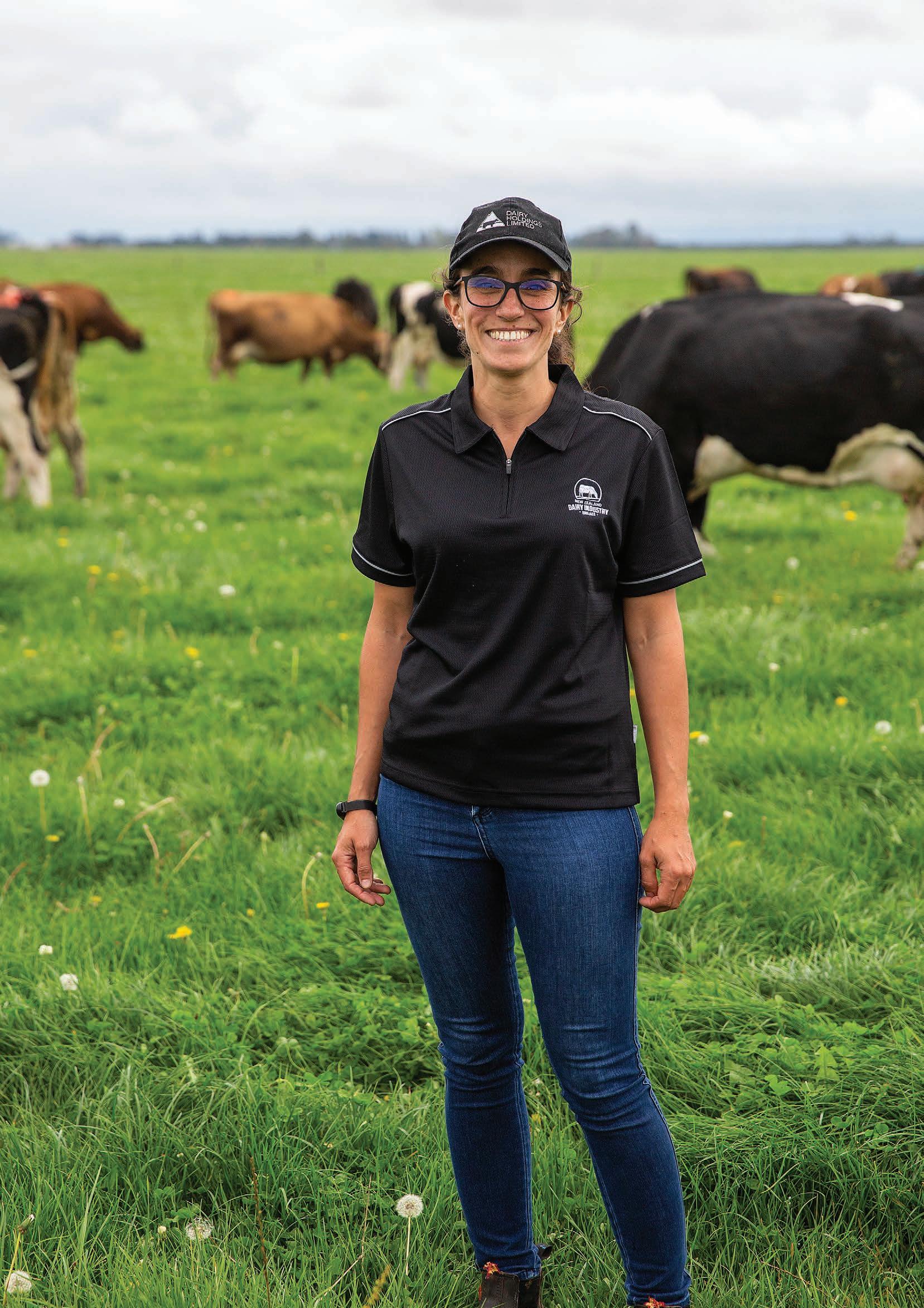
When doubt comes knocking, Maria Alvarez puts it out to pasture.
By Tony Benny
An immigrant from Argentina never expected dairy farming would be a mind-blowing yet rewarding career.
Sitting at home in Argentina, Maria Alvarez hit the refresh button on her computer several times before she reached the most important screen of all – payment. At that moment she knew had made it through the process, and would soon be winging her way across the ocean to New Zealand.
Maria grew up on a beef farm in Argentina and graduated from university with a Bachelor of Agricultural Engineering. She worked for a large crop farming company before coming to NZ on a working holiday, having been lucky to secure one of the 1000 working holiday visas granted to Argentinians each year.
“At 7am NZ time on a certain date, they open the visa application and everybody’s sitting at home in front of their computer. You have to refresh and refresh because the system sort of collapses with so many people trying and then if you make it through to the payment, you make it,” Maria says.
“I was with my mama when I paid and I looked at my mama and I cried and said, ‘I got it, I’m going to NZ, I can’t believe it’, because until then, you don’t know if you are going to make it or not.”
In terms of what job she might do, she wasn’t very interested in dairy farming, although she had thought of it and knew a bit about NZ dairy farming from her studies.
“We always saw NZ as the top of the dairy farming industry, so for me it was always in the back of my mind. My boss from the crop company came to NZ and worked on a dairy farm and when I told him I was coming he said ‘you really need to try dairy farming, it will blow your mind’.”
Her first job was on an apple orchard but after a month of “eight hours a day doing exactly the same thing”, she’d had enough and searched for a dairy farming job.
Fast-forward six years, she loves the industry and has climbed the career ladder so successfully that this year she was named Canterbury North Otago Dairy Manager of the Year.
Maria manages a 180ha, 660-cow farm near Ashburton for corporate farmer Dairy Holdings Ltd (DHL) and in 18 months, made big improvements, including lifting the six-week in-calf rate by 17% and halving milking time.
She says she didn’t expect to like the early starts or working in adverse weather but figured it was only a holiday job, a new experience before carrying on with her travels. She was offered a job by Scott and Helen Searle in Canterbury and moved down from the North Island, expecting to work for them for a few months.
“Then I went on holiday and they said ‘if you want to come back, you’ll still have a job’ and I came back and liked it,” she says.
“I went to Argentina and then came back again.”
The few months turned into four-anda-half years with the Searles, though she did briefly explore her options across the Tasman.
“I wanted to go to Australia and try dairy farming there, but it’s too hot and there are too many flies,” she laughs.
Starting as a dairy assistant on a Dairy
FARM FACTS
• Farm owner: Dairy Holdings Ltd • Farm manager: Maria Alvarez • Location: Hinds, Canterbury • Farm size: 180ha • Cows: 660 Kiwicross and Jersey • Production: 2021: 220,000kg
MS, 1300kg MS/ha • Production target: 202122: 220,000kg MS
Continued page 10
Hoof crush Fieldays® site – I-19
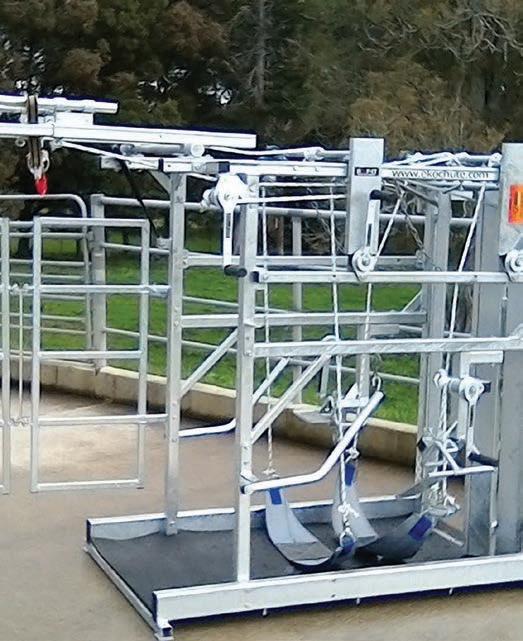
“WE TAKE THE HASSLE OUT OF HOOF CARE”
Prevent and treat lameness issues in your herd.
• Lame Cows or Bulls • Pre-mating Blocking of Bulls • Tidy-up and rebalance trims • Small and large herds • Fast, thorough and efficient • Low cost Pre-booking essential.
Balanced
Range of Hoof Care products available at www.hoofit.nz
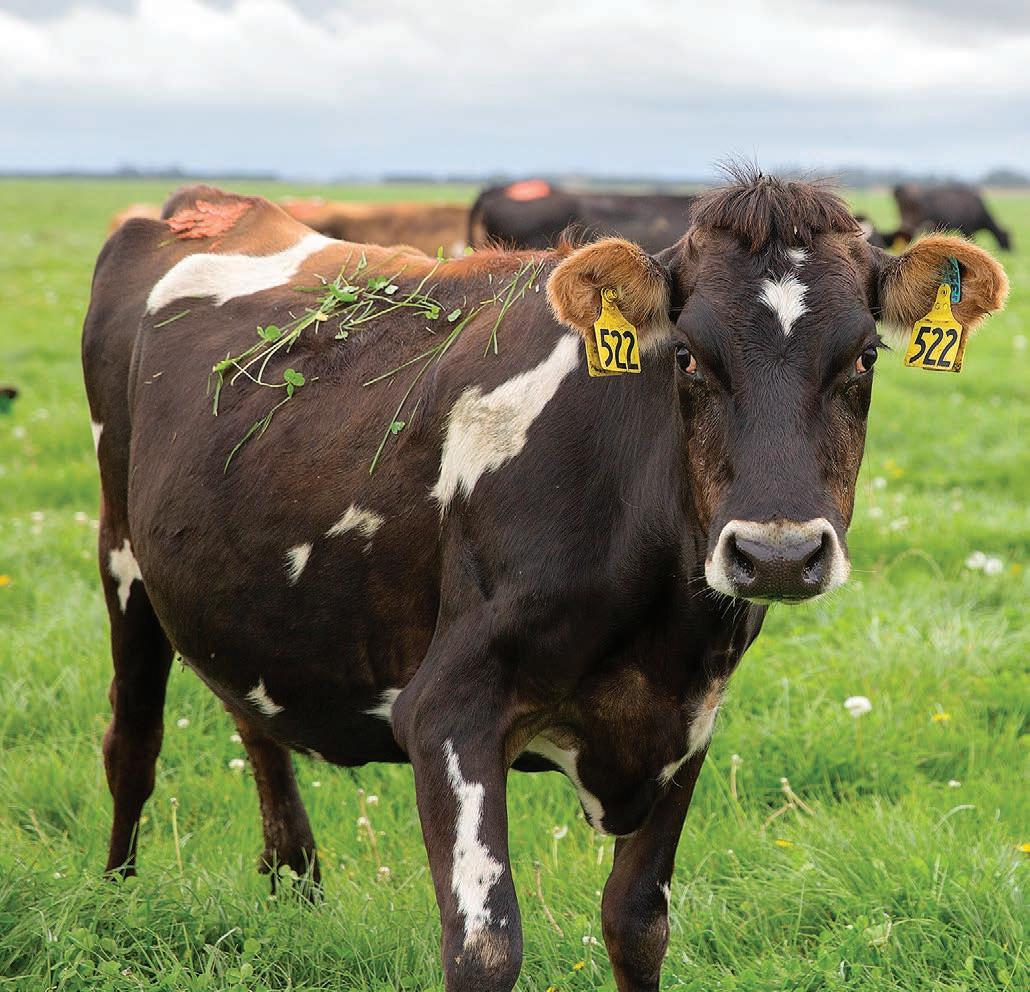
Holdings (DHL) farm at Rakaia and then moving with the Searles to their own farm in Mayfield, Maria worked her way up to a 2IC/farm manager role, under Scott’s supervision. By then, he was pushing her to look for a new opportunity.
“I was happy to work for Scott but he told me ‘you at least have to apply for three jobs as manager for you to be able to stay for another season. If you don’t show me you have applied for manager jobs, you can’t stay’,” she recalls.
“Of course it was kind of a joke, but he didn’t want me to stay in my comfort zone and I’m thankful for that.”
Taking on a managing job happened earlier than expected when Scott heard there was a farm manager’s job coming up on a DHL farm.
“It was Christmas and Scott says ‘I’ve just talked with Mick, the supervisor, and he says if you want, you can start working in two weeks’,” she says.
While Scott was confident Maria was up to the job, she wasn’t really convinced and from the outset she faced innumerable challenges.
“It was really scary and I had a lot of
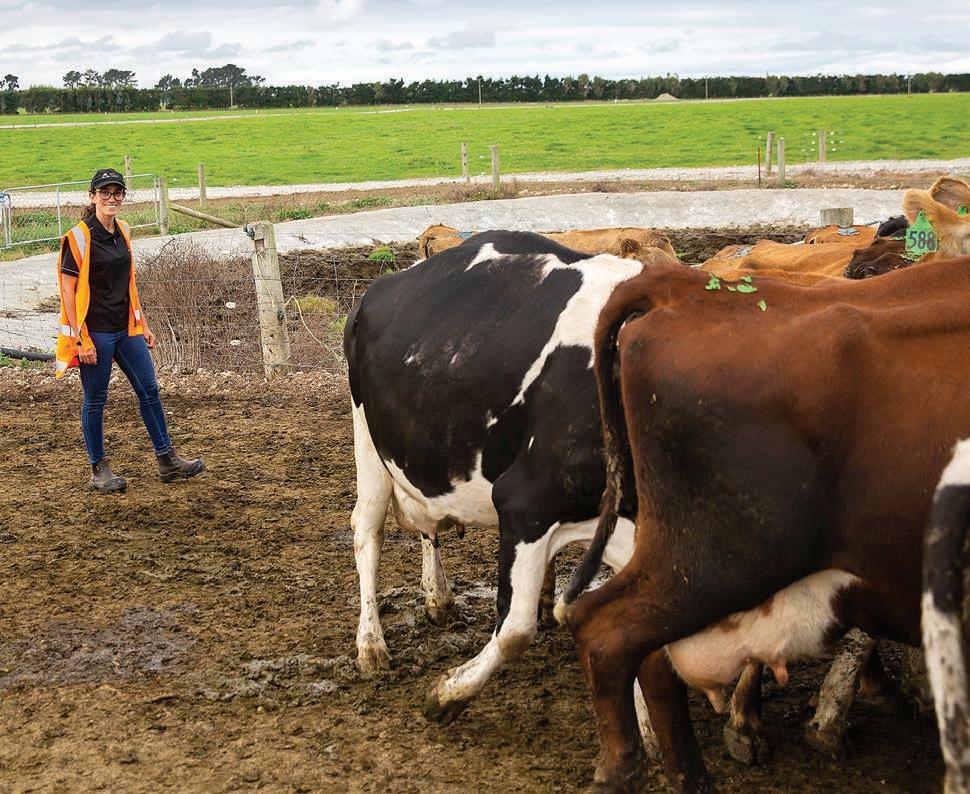
Maria has an Agricultural Engineering degree from Argentina but despite that, says she would have struggled to progress in farming there and that some farmers wouldn’t take her seriously. problems like things breaking. The first couple of months were challenging. In the first week we were scanning and the platform broke,” she says.
Then there were problems with water that threatened to flood the shed and week after week something else would go wrong.
“I was wondering what was I doing here and why did I leave Mayfield when I was so happy there, but you learn,” she says.
Once she realised the breakdowns weren’t her fault and that they would have happened whether she was in charge or not, she learnt to cope.
“When things go wrong or something breaks, that’s when you learn. I realised you need to look for the positives in the bad things because you can always take something out of it,” she says.
“If something broke we learned how to fix it so next time we won’t have to pay for it. I should know how to do it myself and that makes me feel more secure somehow.
“At the start it was ‘I need help’, whereas now I’m, ‘cool down, let’s see, maybe I could fix it, maybe not – but can phone someone if I need to’. It’s not the end of the world, nobody’s died, as long as the cows are fine and the people are fine, we can fix it.”
Team member and 2IC Carlos Masino follows the herd back to their paddock.
The DHL farm she manages is north of the Rangitata River, between SH1 and the coast, an area now mostly devoted to dairy farming, following the boom of conversions over the past couple of decades.
One of the main challenges the farm presented her was the 20-year-old internal rotary shed in which the cows have to turn into the bails, instead of walking forward as in most rotary sheds.
When she arrived, it took close to five hours to milk 600 cows.
“It was really slow, so we started working on cow flow because there was lots to improve. After two months we milked them in two-and-a-half hours. We were really happy with that,” she says.
This year they’re milking 280 cows an hour through the 40-bail shed, double the number being achieved previously.
“That took a lot of pressure off people being in the shed and it’s good for the cows too,” she says.
Six months into the job, Maria was getting encouraging results but soon something else went wrong.
“One week before the heifers started calving my 2IC broke his leg. He was my only guy with experience, he was my right hand. For me it was like a breaking point, I was so stressed. I did find good people but they didn’t have experience,” she says.
That would have been bad enough on a farm with a conventional rotary or herringbone shed, but with an internal rotary it was worse because it’s far harder to teach heifers how to use it.
“You’d be amazed how hard it is to get the heifers used to getting into this shed compared to normal because this is not natural for them, going forward and then reversing and staying there until the next cow comes in because they can get out if they want,” she explains.
“Training them takes a few people because you need to move the platform forward and backwards all the time and to hold them in and you need to stay there until the cow gets into a smaller space and then you go and get another one.”
The heifers are put through the shed to become used to it whenever they’re moved to fresh pasture during winter.
Maria always looks for positives and says even the internal rotary has a good side. “It does have a lot of benefits. You turn around and you can see everything, all the cows,” she says.

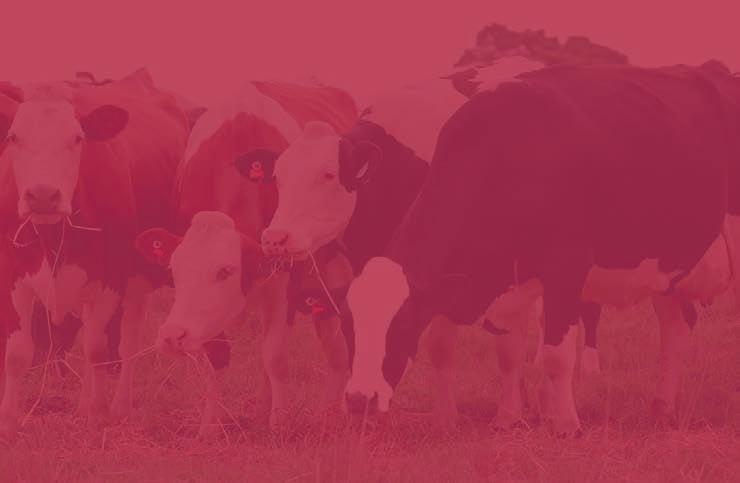


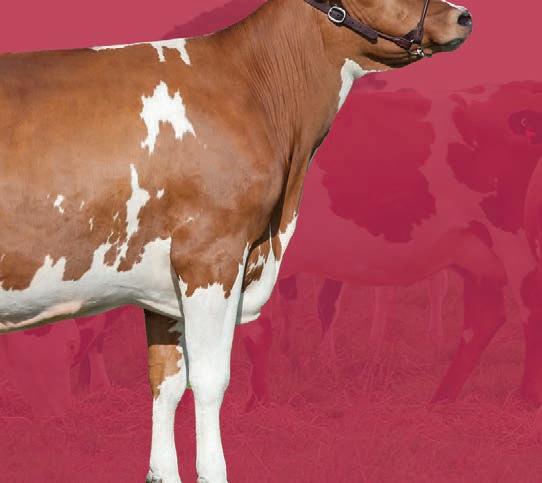
For More Information
DHL runs an all-pasture system on all its 60 farms and does not use supplements to extend lactation. They make silage and will buy additional feed if they need to. The cows are wintered on DHL’s runoffs where they graze fodder beet, topped up with silage.
The focus on grass quality has been valuable to her, learning how to get the most out of pasture.
“Through spring and autumn we didn’t feed silage because we’ve been managing the grass reasonably well,” she says.
“We did make some silage in spring, always looking after the quality. As soon as we go over 3100kg DM/ha, we think the quality will get compromised so that will go for silage.
“I’ve learnt a lot about grass this year and I’m super happy with how we did.”
Next season the herd will be increased to about 740, up from 3.7-4 cows/ha, to use the grass the farm is now producing. Production target for the 2020-21 season was 235,000kg MS, or 1300kg MS/ha, the figure DHL prefers to focus on. Per cow production is about 355kg.
“These cows don’t produce so much but DHL looks for more profit per hectare than per cow, while always looking at their body condition,” she says.
“Some farmers want to get the most out of the cow without looking after her but we get the most out of the land without any supplement, sort of the cheapest way, but always looking after the cow. They are the ones that give you the milk so you really have to look after them.” In her first couple of months on the job, things went wrong with equipment breaking but Maria learnt a lot from the experience.
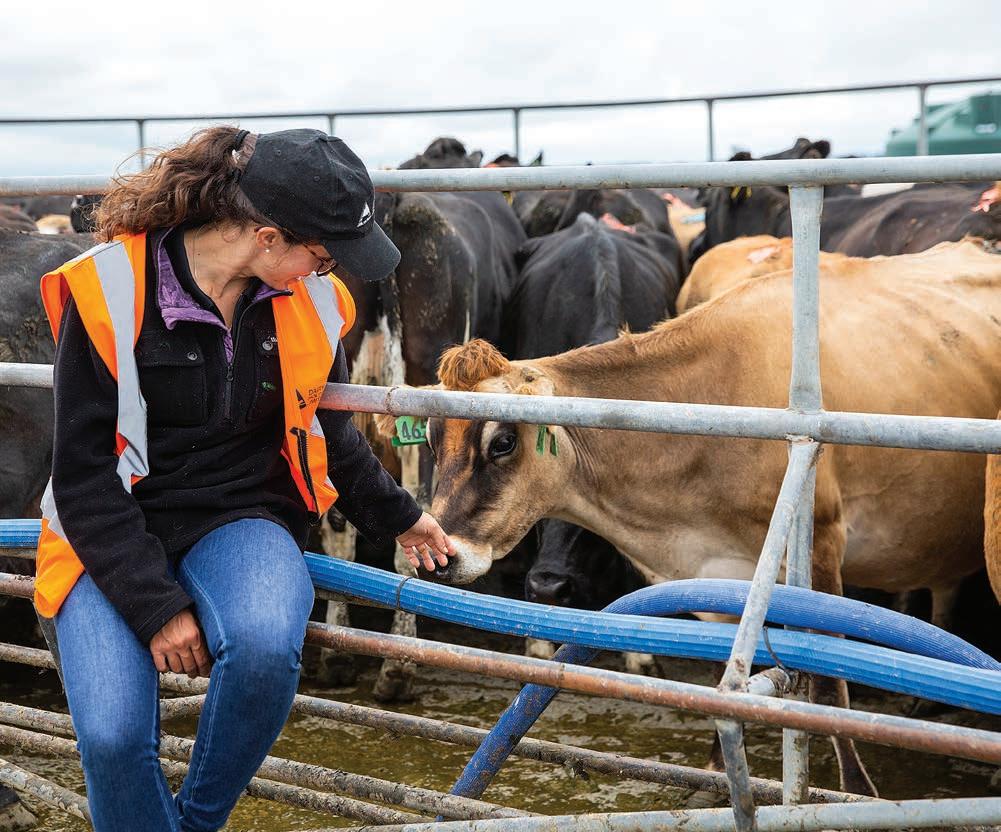
She’s enjoying the slower pace of the end of season and is focusing on making sure the cows stay in good condition. She’s also excited that under her management the farm’s six-week-incalf rate has improved sharply, from 61% to 78%.
“When I got the scanning result I almost cried, I couldn’t believe it. It’s a massive jump. For me it was like everything we worked for. It started in February last year to improve the calving, to improve the mating,” she says, adding that the secret was simple – concentrate on cow condition.
“We made sure the early calvers were in the condition we wanted by winter and then after calving we focused on the later ones. We put them on once a day just to take the pressure off them, just to try to get more cows in calf early.
“We did sacrifice a bit of production with those cows on once-a-day, but it was definitely worth it because we had excellent results.”
The herd was put together in 2019 and comprises mostly Kiwicross cows, with 15% pure Jersey.
Maria says they’re quite small cows and she’s confident she can keep the bigger herd in good condition as well as getting a bit more milk.
“Our herd is really cute. I normally go in the afternoon and sit in the middle of the herd and they will come and sniff me and come for a scratch and I love that,” she says.
Maria is now well-settled in NZ, and even shares her house with a dog and cat.
“The first time I went back to Argentina, I realised it wasn’t home anymore. It was just over a year of being here and all the memories of my friends and family, the way I remember everything changed because
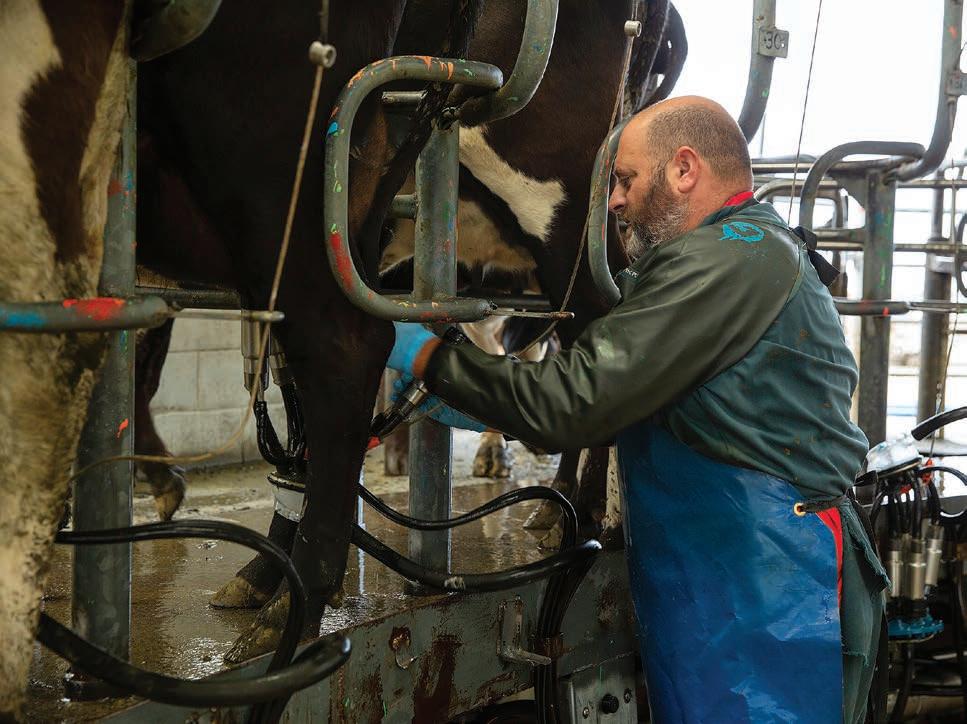
Farm assistant Dario Moreira brings the herd in for afternoon milking.
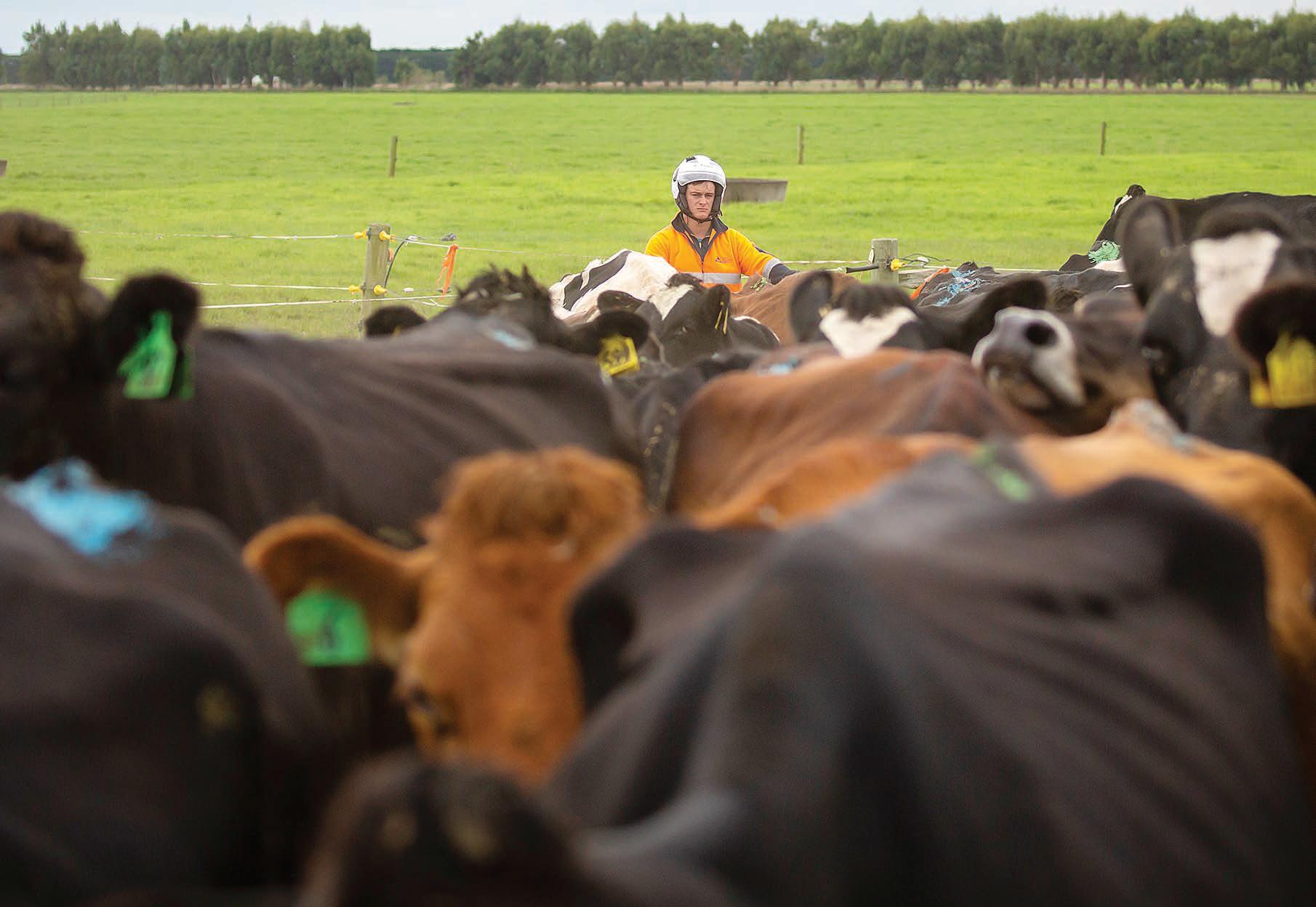
their lives moved on,” she says.
“They have kids and everything’s changed and so it’s like you don’t fit anymore to that memory and you realise that here is where everything is for you, the life you know and I feel so grateful here.”
She’s come to love dairy farming too and her boss in Argentina was right when he said it would blow her mind. Nearly everything about dairy farming here is different from home, she says.
“I have to be honest, for the amount of work you do (in Argentina), you don’t get really good salaries, the houses are not good, the tracks to get in and out in winter you probably can’t even get out, not even the tanker can come in, you need to get the milk out with a tractor. The conditions are a lot different and that’s why I never really liked dairy,” she says.
“But NZ is beautiful and so efficient. I never thought it was going to be this good. You have awesome houses, power, internet, you’re close to town, you’re never going to get stuck on the road here because the roads are amazing, and salaries are great so I really like it.
“There is the possibility to grow, that’s something amazing for me in NZ. At home you can work and work and you might not progress at all. But here if you want to work and progress you can.”
Even with a degree in agriculture, Maria says as a woman she would have struggled to progress in farming in Argentina and that some farmers wouldn’t take her seriously.
“But here, they didn’t care that I am a woman, they gave me the opportunity,” she says.
She keeps in touch with her Latin culture by regularly catching up with fellow South Americans living in the area and when she needs time away from the farm, she’ll take her dog to the beach or go walking.
“Ashburton Lakes are one of my favourite places. There’s no phone reception there, that’s the key. I say, ‘okay, I’m off. I have no reception, good luck’,” she laughs.
“That’s the good thing, the guys are really responsible and if something happens, they deal with it. They’re really good about that, they like solving problems and fixing things.”
But for now Maria has progressed as far as she can because of delays processing her application for residency, which means she can’t take up the job DHL have offered her as a contract milker.
“You need to be a resident to be able to have a business and I have been waiting for a year-and-a-half. Immigration is so slow,” she says.
She’s spent close to $8000 on fees on an immigration consultant, but for now her career progression is on hold.
“It’s getting harder and harder at the moment, which is fine, because they want good people to stay in NZ. I have really good intentions and I want to progress and I’m stuck.
“But I guess it is what it is. I’m really grateful anyway, so I just have to be patient and hopefully one day I get it.”
In the meantime though, she appreciates every day on the farm.
“I always take a couple of minutes in the morning to see the sunrise,” she says.
“For me, it is the moment I put my feet on the earth and enjoy it because every morning is beautiful. I’m so lucky.” n









